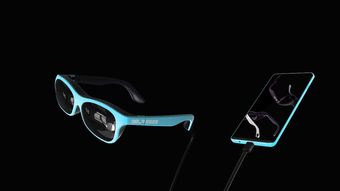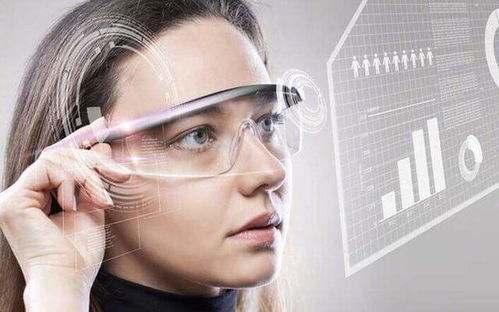How Do AR Glasses Work?
Augmented Reality (AR) glasses have revolutionized the way we interact with the digital world, blending the physical and virtual realms seamlessly. If you’ve ever wondered how these innovative devices work, you’ve come to the right place. Let’s delve into the fascinating world of AR glasses and uncover the technology behind them.
Understanding the Basics

AR glasses are wearable devices that overlay digital information onto the real world. Unlike Virtual Reality (VR) headsets, which create an immersive, simulated environment, AR glasses enhance the user’s perception of the real world by adding digital elements to it.
At their core, AR glasses consist of several key components:
- Display Technology: The display is the heart of AR glasses. Early models used small screens placed in front of the eyes, but modern AR glasses use transparent displays that allow users to see the real world while still viewing digital information.
- Camera and Sensors: AR glasses are equipped with cameras and sensors to capture the user’s environment and track their movements. This information is used to determine the position and orientation of the digital elements relative to the real world.
- Processor: The processor analyzes the data from the sensors and camera, and then calculates the position and orientation of the digital elements. It also handles the rendering of the digital content onto the display.
- Software: The software running on AR glasses is responsible for managing the user interface, handling interactions, and ensuring that the digital content is displayed correctly.
How AR Glasses Display Information

One of the most crucial aspects of AR glasses is how they display information. There are two primary methods:
- Waveguide Technology: Waveguide technology uses a series of lenses to direct light from a small display to the user’s eyes. This method allows for a transparent display that doesn’t obstruct the user’s view of the real world.
- Optical see-through Technology: Optical see-through technology uses a combination of lenses and mirrors to reflect digital content onto the user’s eyes. This method provides a more natural viewing experience but can be less transparent than waveguide technology.
Tracking and Positioning

AR glasses rely on a combination of sensors and cameras to track the user’s movements and the environment around them. Here are some of the key technologies used:
- Accelerometers and Gyroscopes: These sensors measure the user’s acceleration and orientation, providing data on their movement and position.
- Compass: The compass sensor helps determine the user’s heading and orientation in relation to the Earth’s magnetic field.
- Depth Sensors: Depth sensors, such as LiDAR or structured light sensors, measure the distance between the user and objects in the environment, providing data on the 3D structure of the space.
- Camera Tracking: The camera captures images of the environment and uses computer vision algorithms to track the user’s movements and the position of objects.
Interacting with AR Glasses
Interacting with AR glasses is a crucial aspect of their usability. Here are some of the methods used:
- Touchscreen: Many AR glasses have a touchscreen on the frame or on the side, allowing users to interact with the digital content.
- Voice Commands: Users can control AR glasses using voice commands, making it easier to interact with the device while on the move.
- Hand Gestures: Some AR glasses support hand gesture recognition, allowing users to control the device with simple hand movements.
- Eye Tracking: Advanced AR glasses can track the user’s eye movements, allowing for more intuitive and precise interactions with the digital content.
Applications of AR Glasses
AR glasses have a wide range of applications across various industries:
- Healthcare: AR glasses can be used to assist surgeons during operations, provide real-time information to patients, and help medical professionals diagnose and treat conditions.
- Manufacturing: AR glasses can be used to guide workers through complex assembly processes, provide maintenance instructions, and improve safety in industrial environments.
- Education: AR glasses can enhance the learning experience









